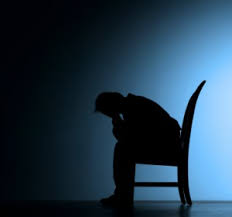NY Times: Getting Mental Health Care for Others
An article from the NY Times about getting mental health care for others:
Getting Someone to Psychiatric Treatment Can Be Difficult and Inconclusive
By A. G. SULZBERGER and BENEDICT CAREYTUCSON —What are you supposed to do with someone like Jared L. Loughner?
That question is as difficult to answer today as it was in the years and months and days leading up to the shooting here that left 6 dead and 13 wounded.
Millions of Americans have wondered about a troubled loved one, friend or co-worker, fearing not so much an act of violence, but — far more likely — self-inflicted harm, landing in the streets, in jail or on suicide watch. But those in a position to help often struggle with how to distinguish ominous behavior from the merely odd, the red flags from the red herrings.
In Mr. Loughner’s case there is no evidence that he ever received a formal diagnosis of mental illness, let alone treatment. Yet many psychiatrists say that the warning sings of a descent into psychosis were there for months, and perhaps far longer.
Moving a person who is resistant into treatment is an emotional, sometimes exhausting process that in the end may not lead to real changes in behavior. Mental health resources are scarce in most states, laws make it difficult to commit an adult involuntarily, and even after receiving treatment, patients frequently stop taking their medication or seeing a therapist, believing that they are no longer ill.
The Virginia Tech gunman was committed involuntarily before killing 32 people in a 2007 rampage.
With Mr. Loughner, dozens of people apparently saw warning signs: the classmates who listened as his dogmatic language grew more detached from reality. The police officers who nervously advised that he could not return to college without a medical note stating that he was not dangerous. His father, who chased him into the desert hours before the attack as Mr. Loughner carried a black bag full of ammunition.
“This isn’t an isolated incident,” said Daniel J. Ranieri, president of La Frontera Center, a nonprofit group that provides mental health services. “There are lots of people who are operating on the fringes who I would describe as pretty combustible. And most of them aren’t known to the mental health system.”
Dr. Jack McClellan, an adult and child psychiatrist at the University of Washington, said he advises people who are worried that someone is struggling with a mental disorder to watch for three things — a sudden change in personality, in thought processes, or in daily living. “This is not about whether someone is acting bizarrely; many people, especially young people, experiment with all sorts of strange beliefs and counterculture ideas,” Dr. McLellan said. “We’re talking about a real change. Is this the same person you knew three months ago?”
Those who have watched the mental unraveling of a loved one say that recognizing the signs is only the first step in an emotional, often confusing, process. About half of people with mental illnesses do not receive treatment, experts estimate, in part because many of them do not recognize that they even have an illness.
Pushing such a person into treatment is legally difficult in most states, especially when he or she is an adult — and the attempt itself can shatter the trust between a troubled soul and the one who is most desperate to help. Others, though, later express gratitude.
“If the reason is love, don’t worry if they’ll be mad at you,” said Robbie Alvarez, 28, who received a diagnosis of schizophrenia after being involuntarily committed when his increasingly erratic behavior led to a suicide attempt. At the time, he said, he was living in Phoenix with his parents, who he was convinced were trying to kill him. In Arizona it is easier to obtain an involuntary commitment than in many states because anyone can request an evaluation if they observe behavior that suggests a person may present a danger or is severely disabled (often state laws require some evidence of imminent danger to self or others).
But there are also questions about whether the system can accommodate an influx of new patients. Arizona’s mental health system has been badly strained by recent budget cuts that left those without Medicaid stripped of most of their services, including counseling and residential treatment, though eligibility remains for emergency services like involuntary commitment. And the state is trying to change eligibility requirements for Medicaid, which would potentially reduce financing further and leave more with limited services.
Still, people who have been through the experience argue that it is better to act sooner rather than later. “It’s not easy to know when we could or should intervene but I would rather err on the side of safety than not,” said H. Clarke Romans, executive director of the local chapter of the National Alliance on Mental Illness, an advocacy group, who had a son with schizophrenia.
The collective failure to move Mr. Loughner into treatment, either voluntarily or not, will never be fully understood, because those who knew the young man presumably wrestled separately and privately about whether to take action. But the inaction has certainly provoked second-guessing. Sheriff Clarence Dupnik of Pima County told CNN last Wednesday that Mr. Loughner’s parents were as shocked as everyone else. “It’s been very, very devastating for them,” he said. “They had absolutely no way to predict this kind of behavior.”
Linda Rosenberg, president of the National Council for Community Behavioral Healthcare, said, “The failure here is that we ignored someone for a long time who was clearly in tremendous distress.” Ms. Rosenberg, whose group is a nonprofit agency leading a campaign to teach people how to recognize and respond to signs of mental illness, added, “He wasn’t someone who could ask for help because his thinking was affected, and as a community no one said, let’s stop and make sure he gets help.”
At the University of Arizona, where a nursing student killed three instructors on campus eight years ago before killing himself, feelings of sadness and anger initially mixed with some guilt as the university examined the missed warning signs.
The overhauled process for addressing concerns is now more responsive, even if there are sometimes false alarms, said Melissa M. Vito, vice president for student affairs. “I guess I’d rather explain why I called someone’s parents than why I didn’t do something,” she said.
Many others feel the same way.
Four years ago Susan Junck watched her 18-year-old son return from community college to their Phoenix home one afternoon and, after preparing a snack, repeatedly call the police to accuse his mother of poisoning him. She assumed it was an isolated outburst, maybe connected to his marijuana use. In the coming months, though, her son’s behavior grew more alarming, culminating in an arrest for assaulting his girlfriend, who was at the center of a number of his conspiracy theories.
“I knew something was wrong but I literally just did not understand what,” Ms. Junck, 49, said in a recent interview. “It probably took a year before I realized my son has a mental illness. This isn’t drug related, this isn’t bad behavior, this isn’t teenage stuff. This is a serious mental illness.”
Fearful and desperate, she brought her son to an urgent psychiatric center and — after a five-hour wait — agreed to sign paperwork to have him involuntarily committed as a danger to himself or others. Her son screamed for her help as he was carried off. He was diagnosed with paranoid schizophrenia and remains in a residential treatment facility.
This week Erin Adams Goldman, a suicide prevention specialist with a mental health nonprofit organization in Tucson, is teaching the first local installment of a course that is being promoted around the country called mental health first aid, which instructs participants how to recognize and respond to the signs of mental illness.
A central tenet is that if a person has suspicions about mental illness it is better to open the conversation, either by approaching the individual directly, someone else who knows the person well or by asking for a professional evaluation.
“There is so much fear and mystery around mental illness that people are not even aware of how to recognize it and what to do about it,” Ms. Goldman said. “But we get a feeling when something is not right. And what we teach is to follow your gut and take some action.”

